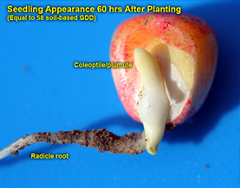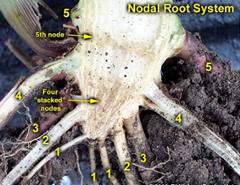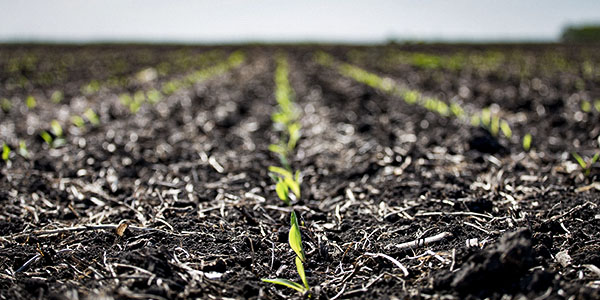AGRONOMICSUPPORT
YOU CAN TAKETO THE FIELD
Evaluating Plant Stands in Corn
Over the next few weeks, the United States corn crop will be planted. Once the crop begins to emerge many farmers will start to scout and grade their stands of corn. There are a few dozen things that could impact corn plants before the stand is fully established, but today let’s discuss three specific items and ways to combat them.
 Uneven Emergence
Uneven Emergence
One of the first things you may notice is uneven emergence. If you do see this in your fields, a few of the more common problems are uneven planting depth, trash (which causes air around the seed) or uneven soil temperatures. Most of these issues can be resolved right at planting if you get out and dig up a few seeds to make sure the soil is firmed around the seed completely.
 Dead Seeds
Dead Seeds
If you find dead seeds after planting, you could be seeing the results of cold imbibition or cold shock. Dead seeds will usually have little to no sprout and pop like a zit when squeezed. In this case, it’s likely the seed imbibed cold water within the first 48 hours of planting. When the cold water is brought in the cell, membranes rupture which kills the seed. It is very important to make sure the first 48-72 hours of a corn seeds life is spent in soils around 50◦F.
 Nodal Roots
Nodal Roots
A lot of farmers think their corn stand is complete once the crop is emerged. This is inaccurate. A corn stand is not fully established until the nodal roots are established. Once the nodal roots are established, the plant changes it lifeline for mostly seed dependence to soil dependence.
 A fully established nodal root system will consist of 5 sets with the first three sets accounting for around 90% of the nutrient uptake. So, if we observe any issues with the first three sets a yield loss will more than likely be observed.
A fully established nodal root system will consist of 5 sets with the first three sets accounting for around 90% of the nutrient uptake. So, if we observe any issues with the first three sets a yield loss will more than likely be observed.
Establishing an A+ rating for a corn stand is a difficult accomplishment. You can do everything right on your end and mother nature can still throw a wrench in the plan. When grading your stands get out there early and often, and do not hesitate to contact your local LG Seeds Technical Team Agronomist with questions. If you're not quite to planting yet and want to check your conditions, use these steps to determine the right time to plant: When's The Right Time To Plant?
Photos courtesy of Purdue University Extension
Download a copy of this Technical Bulletin Here: Evaluating Plant Stands In Corn






Technical Team Agronomist